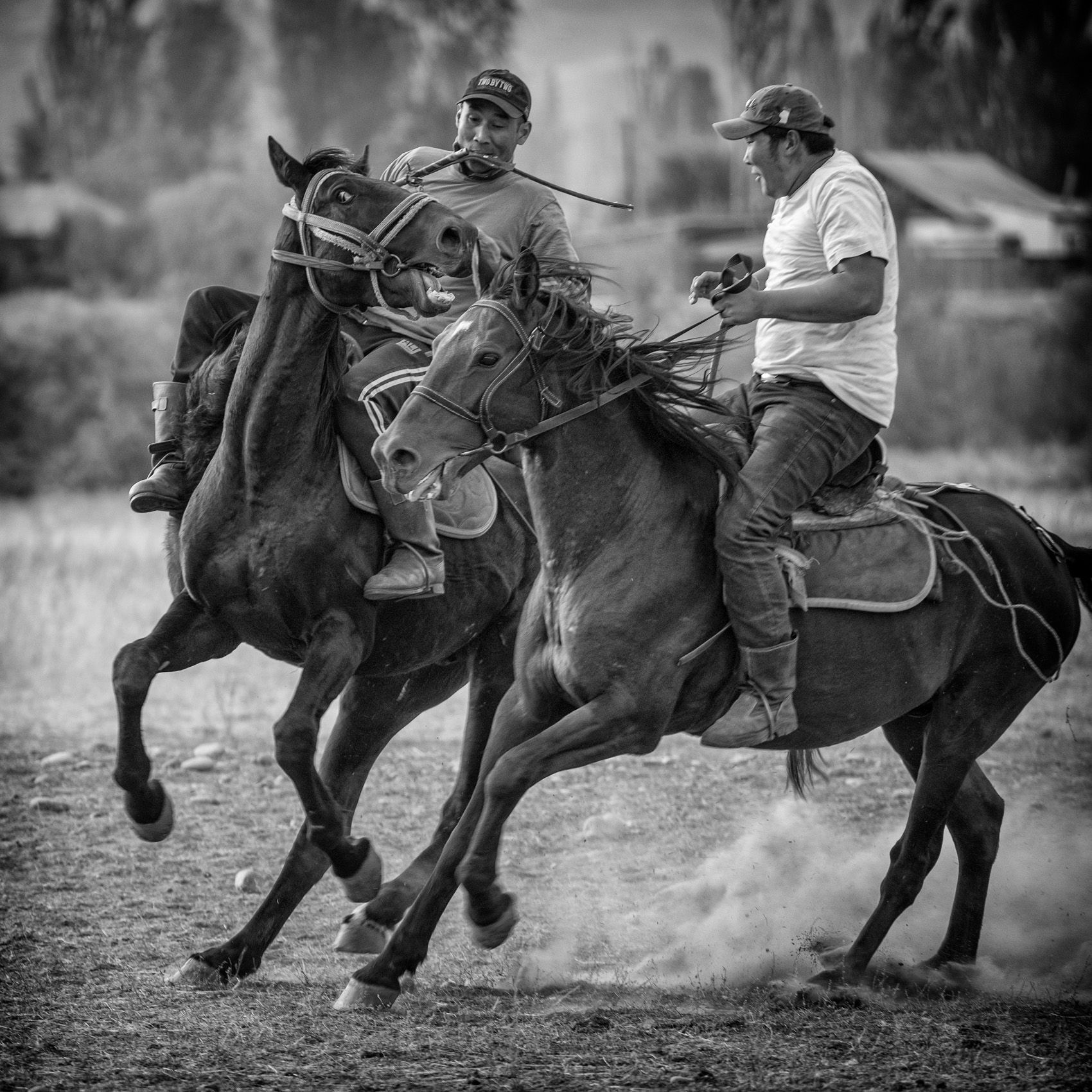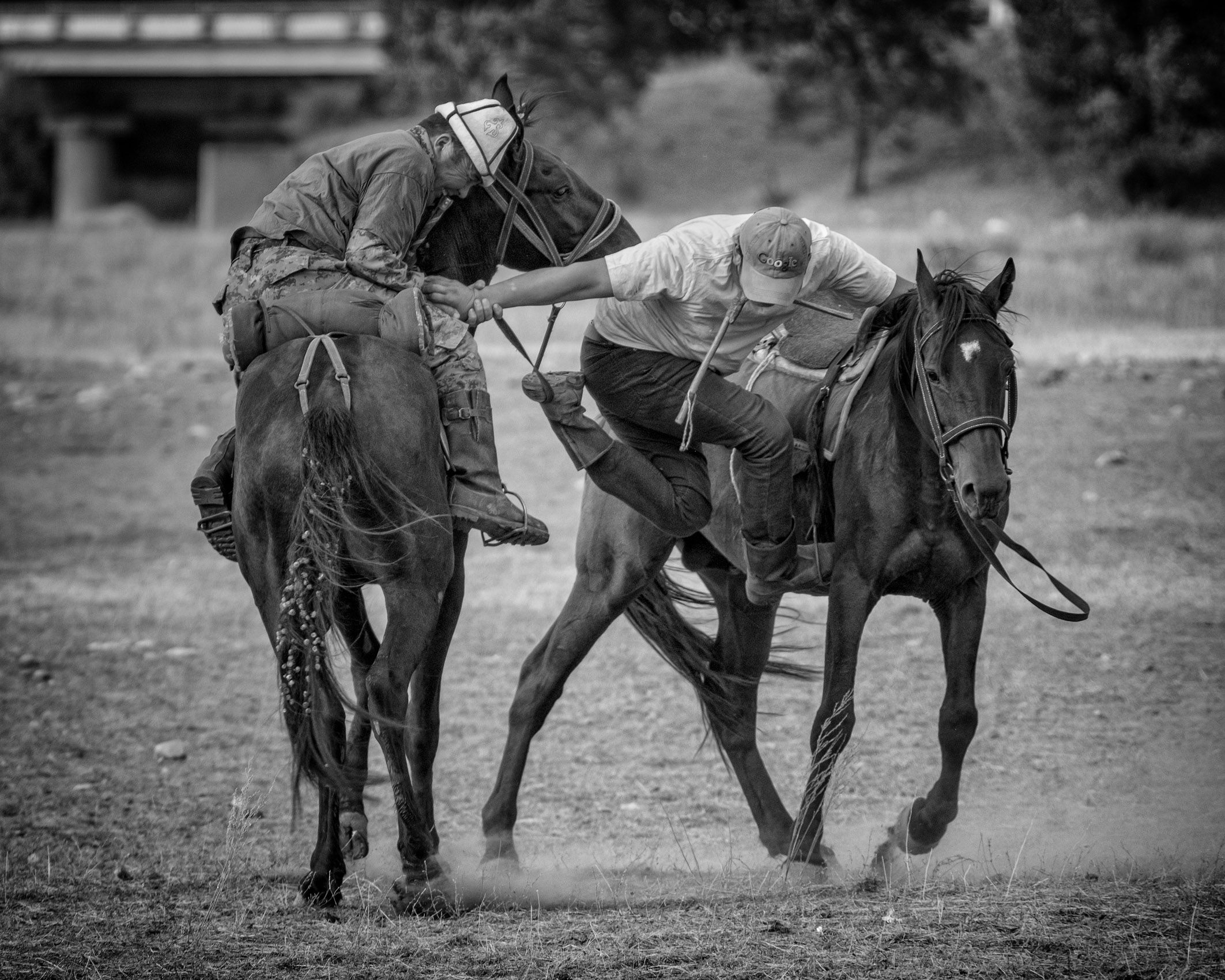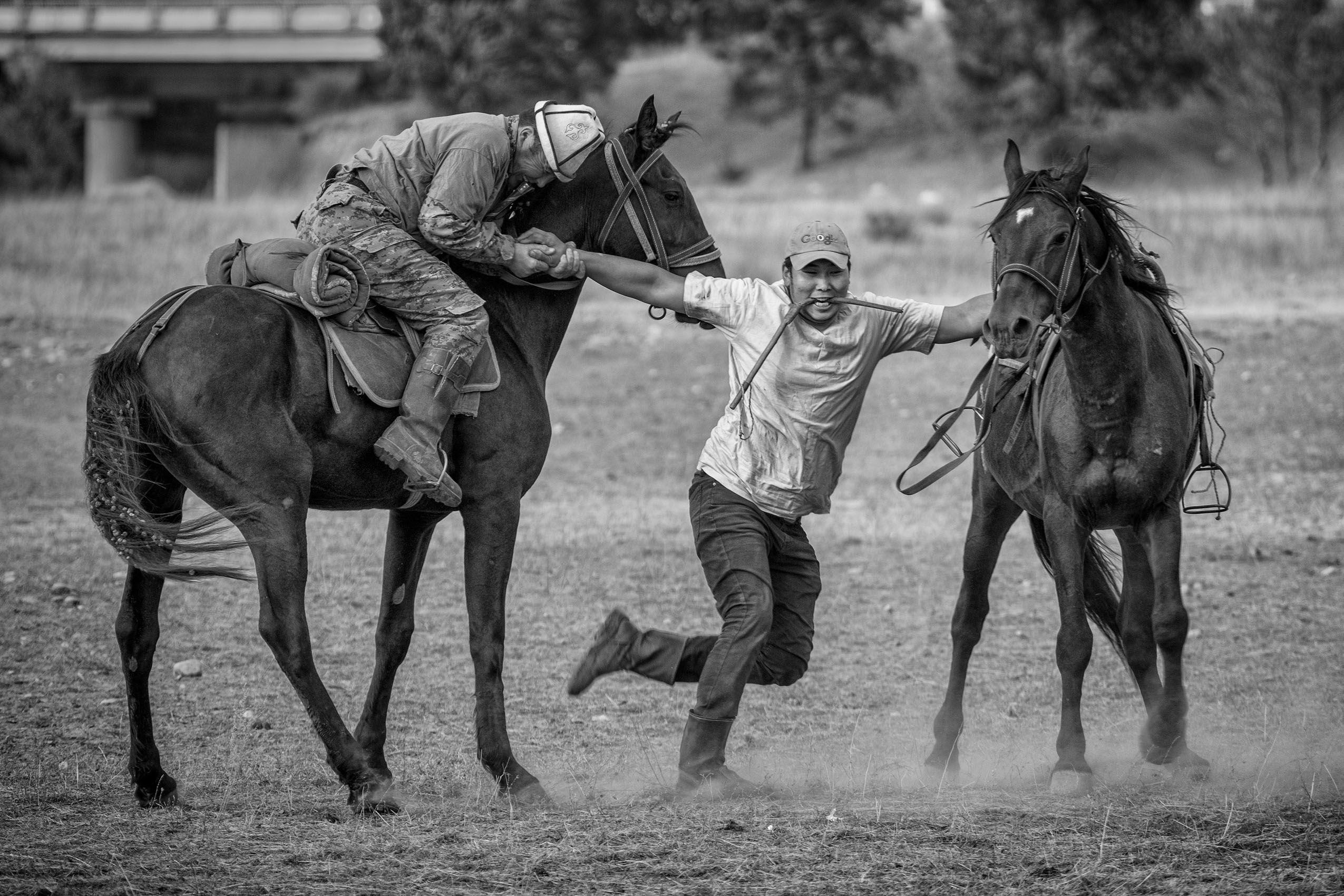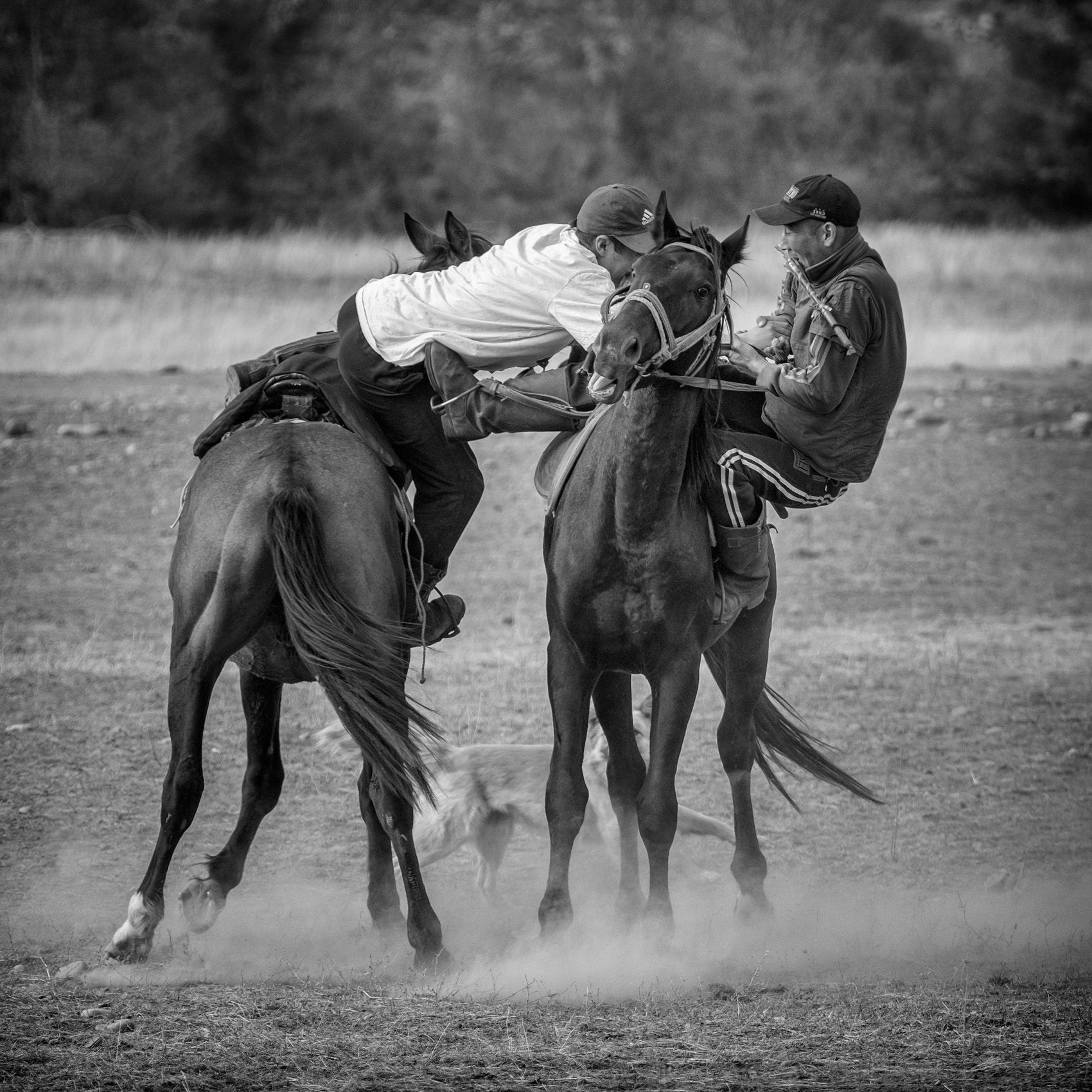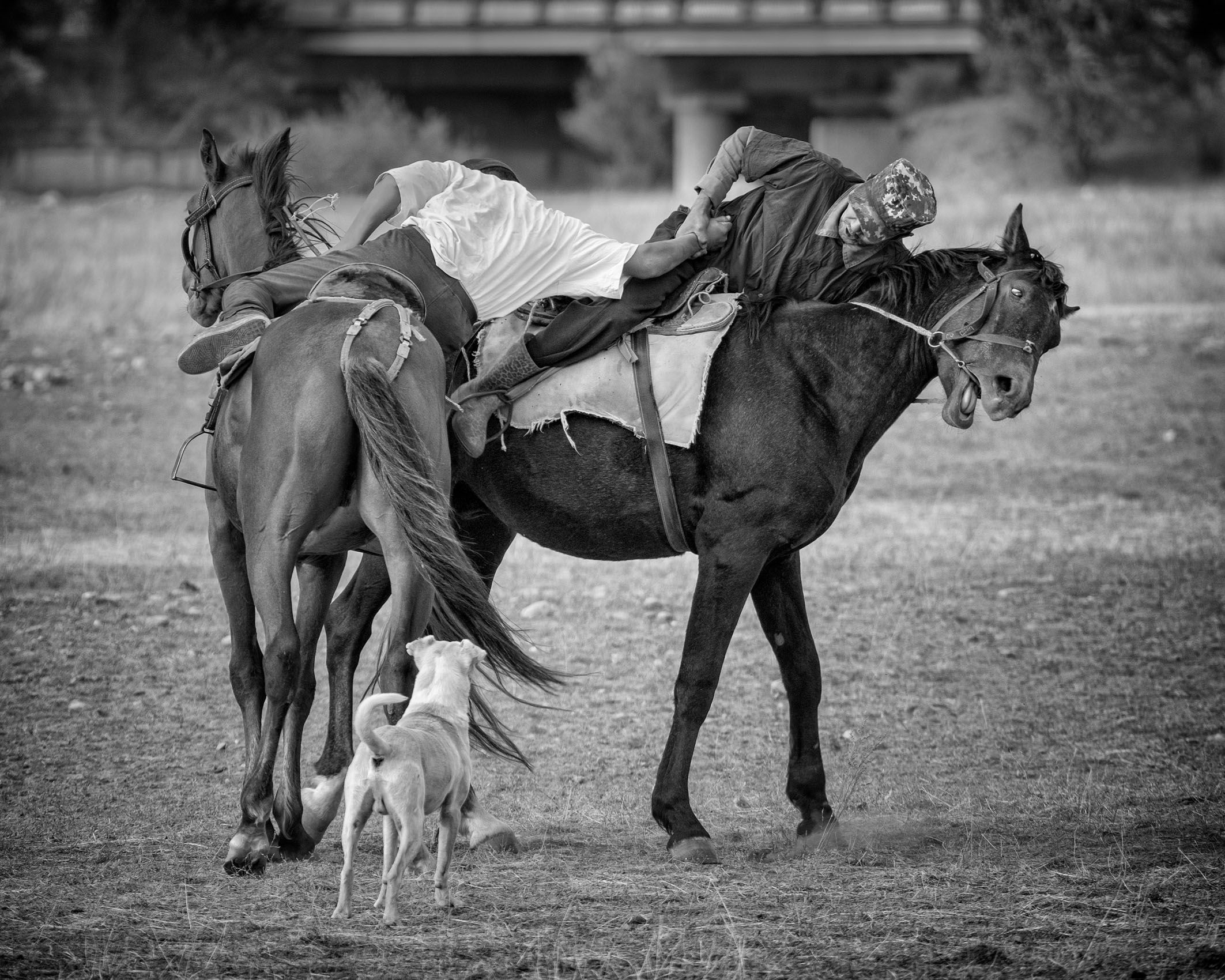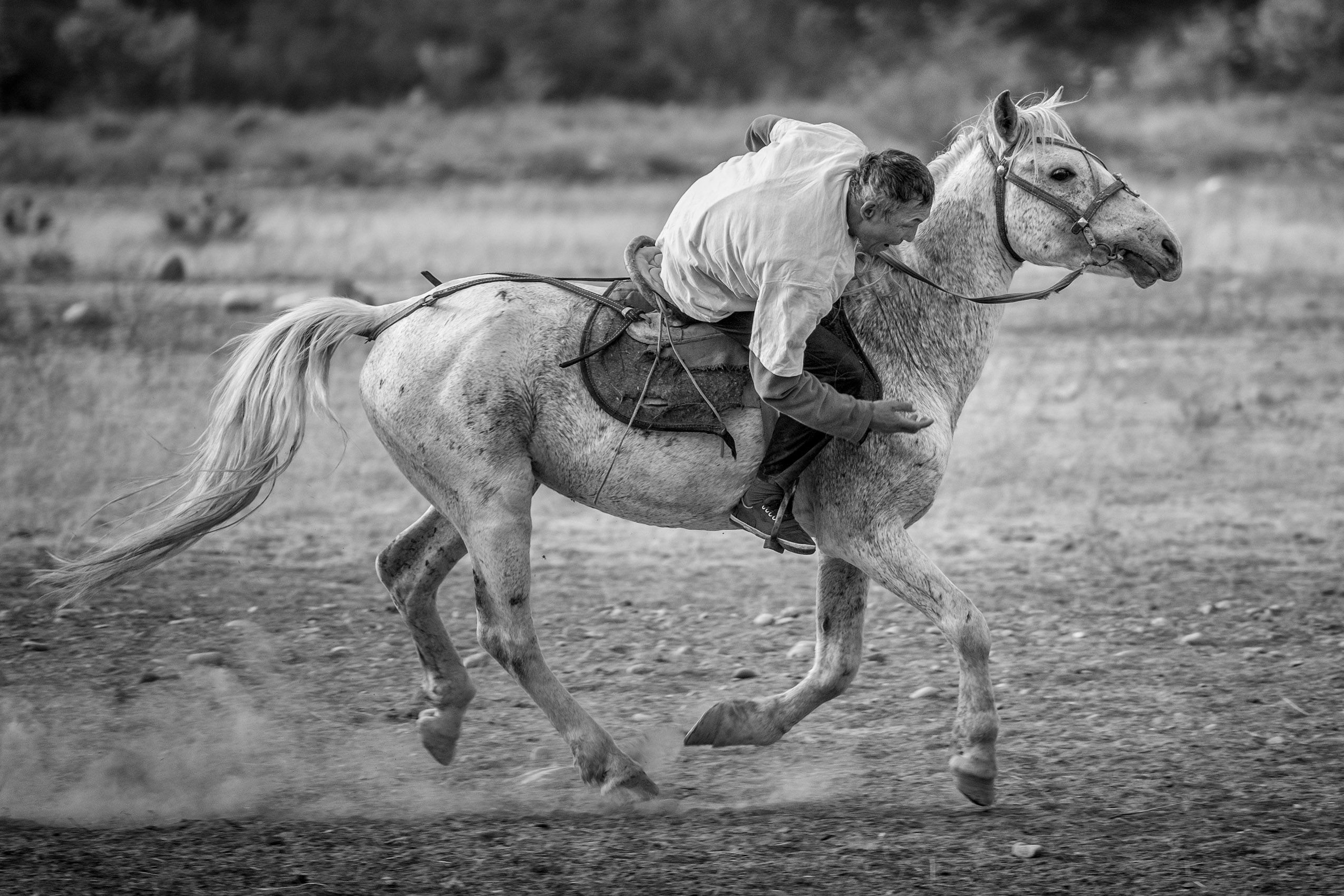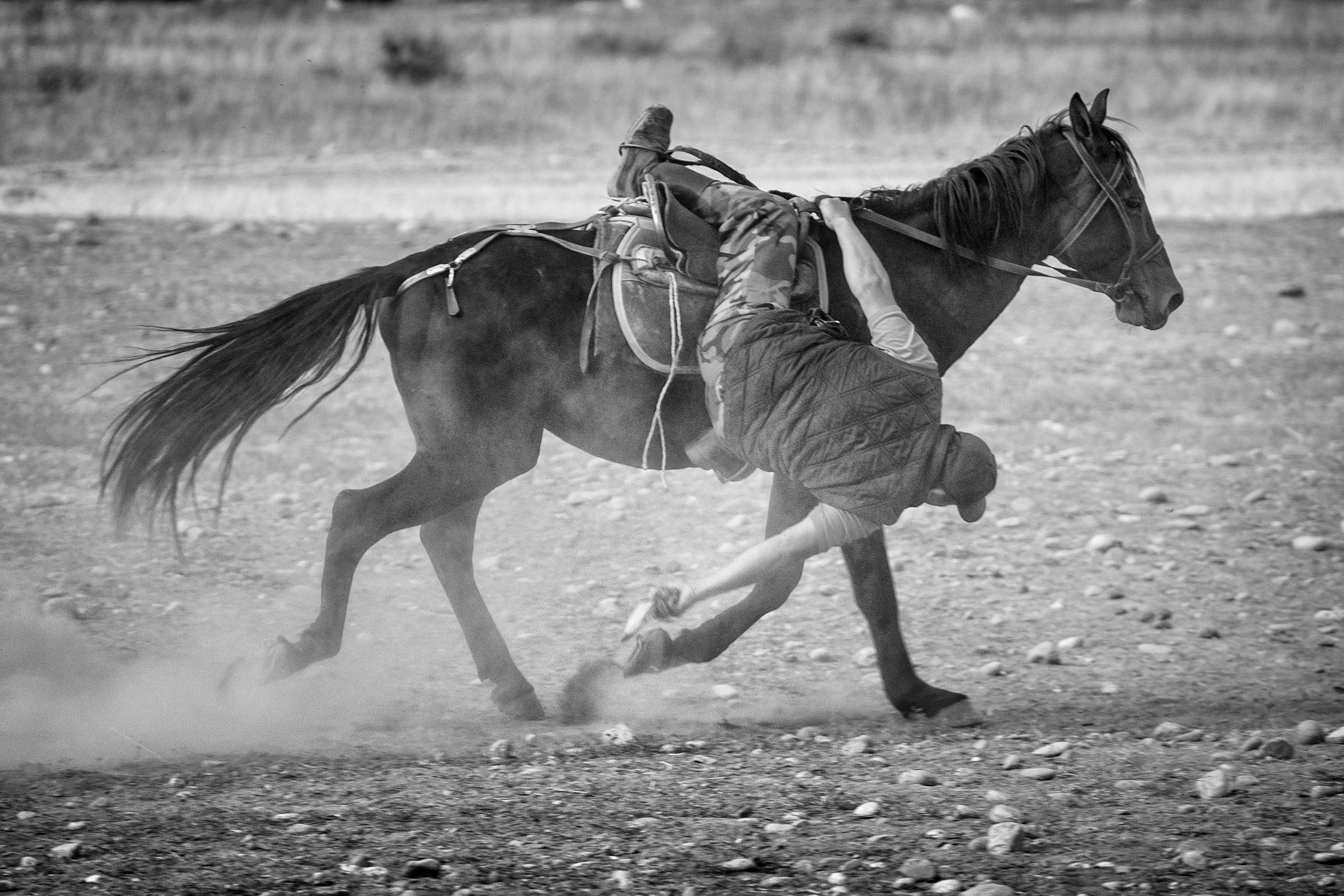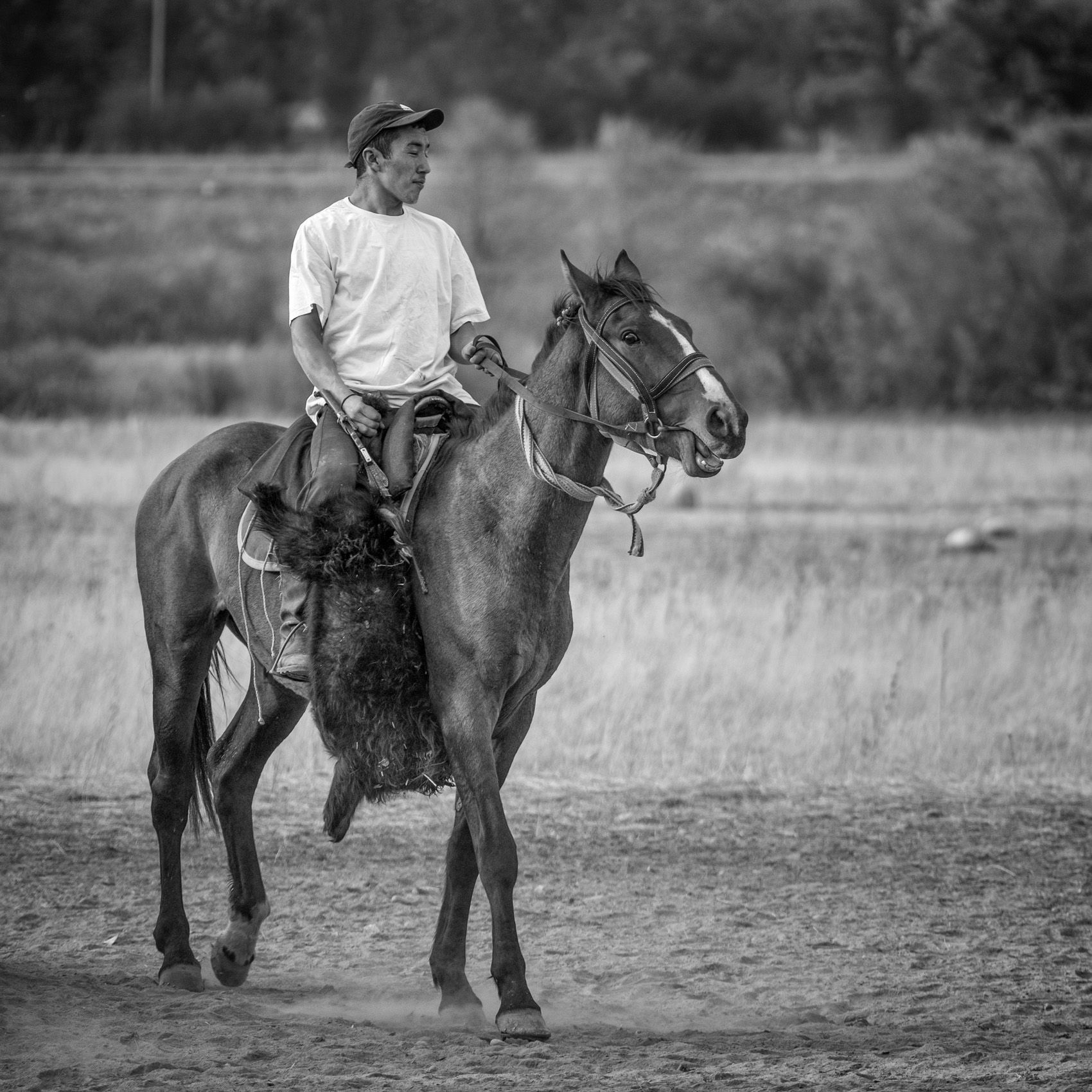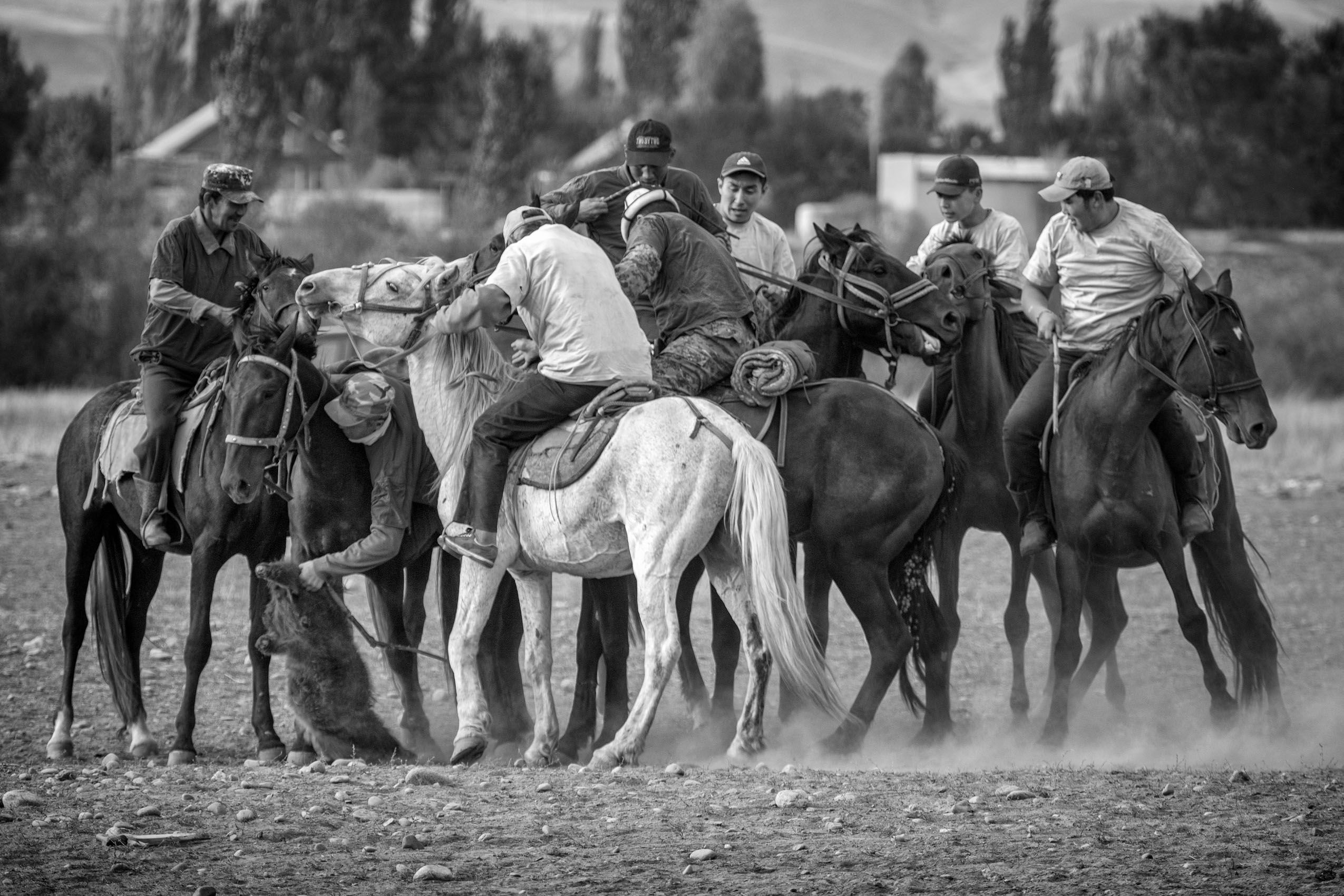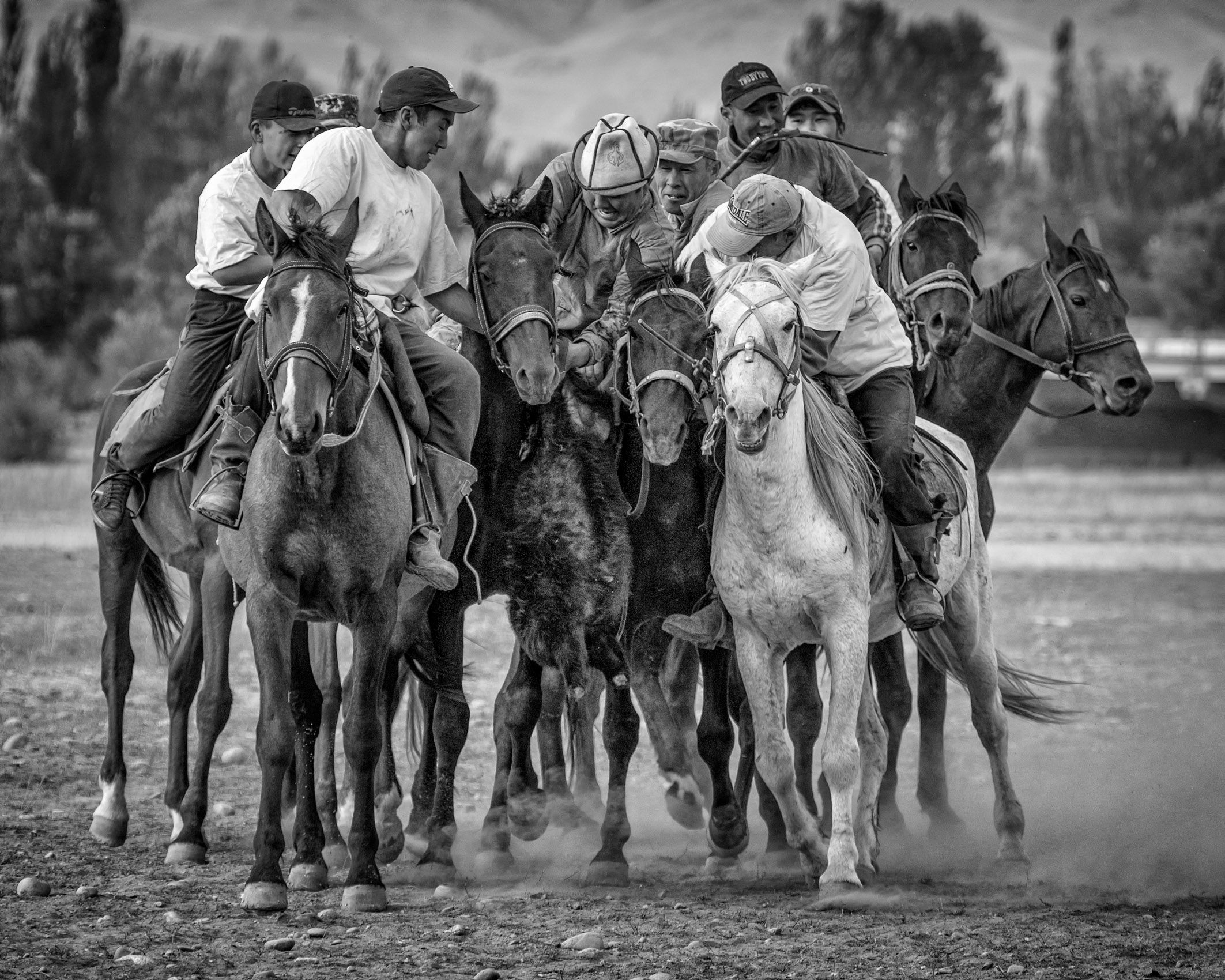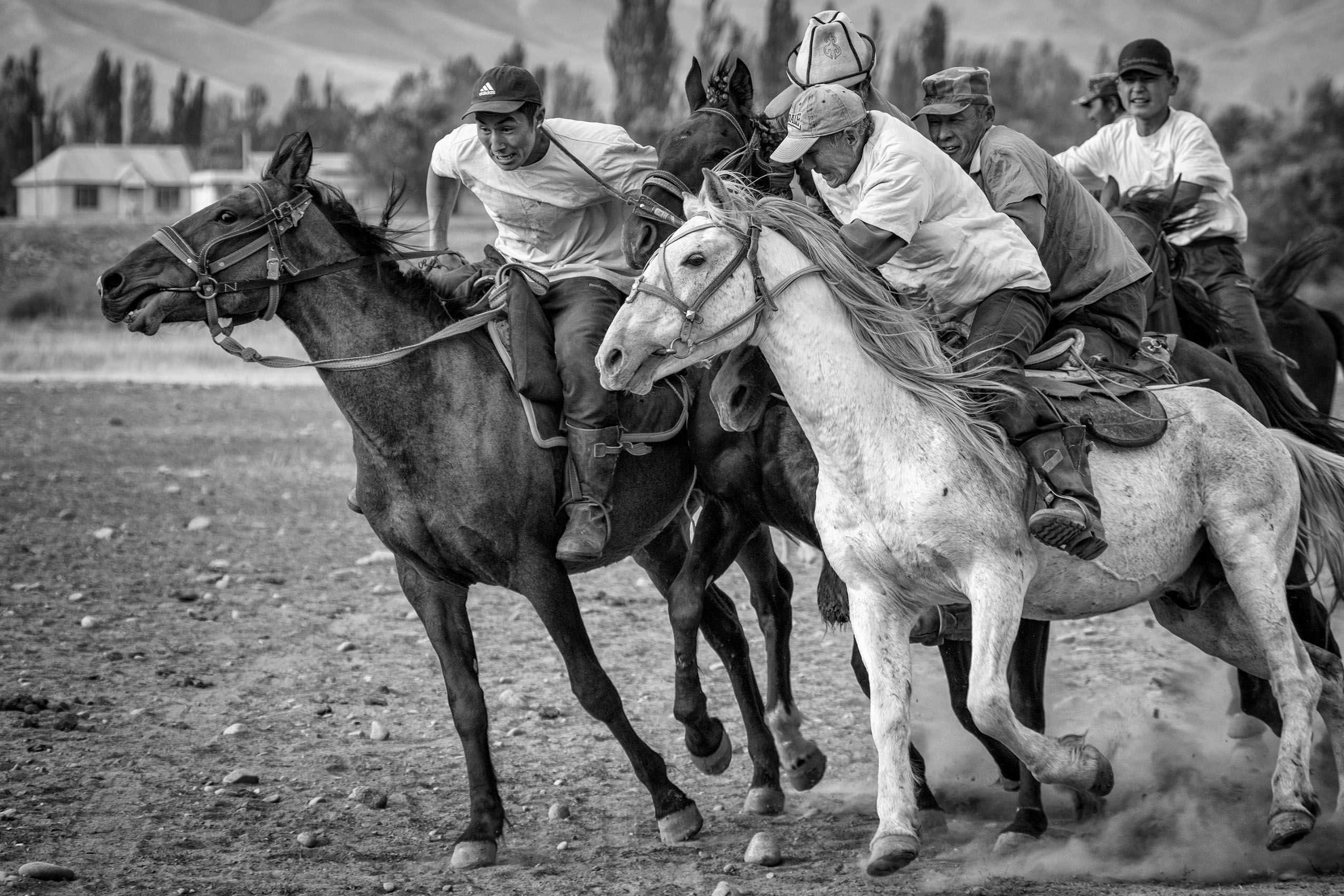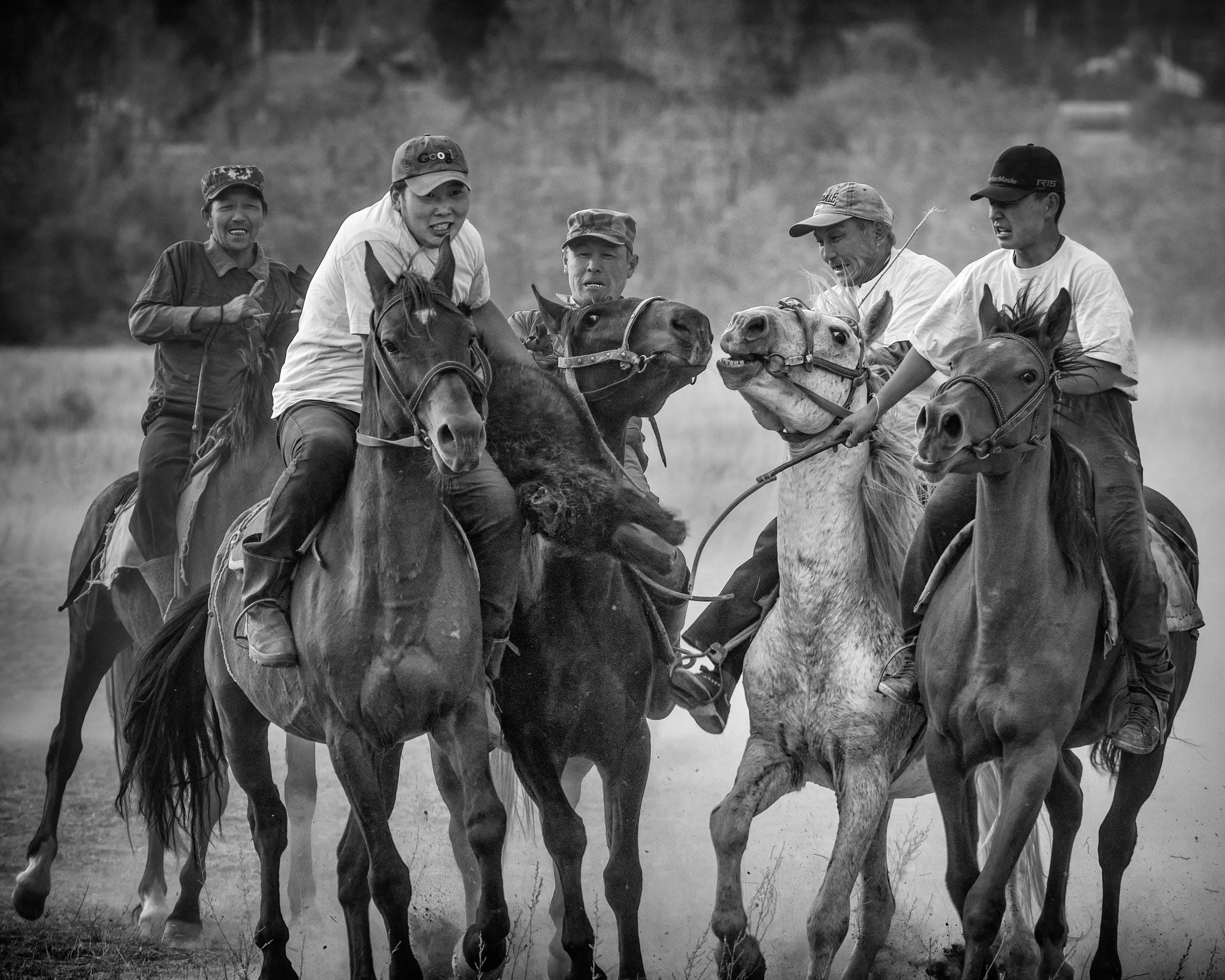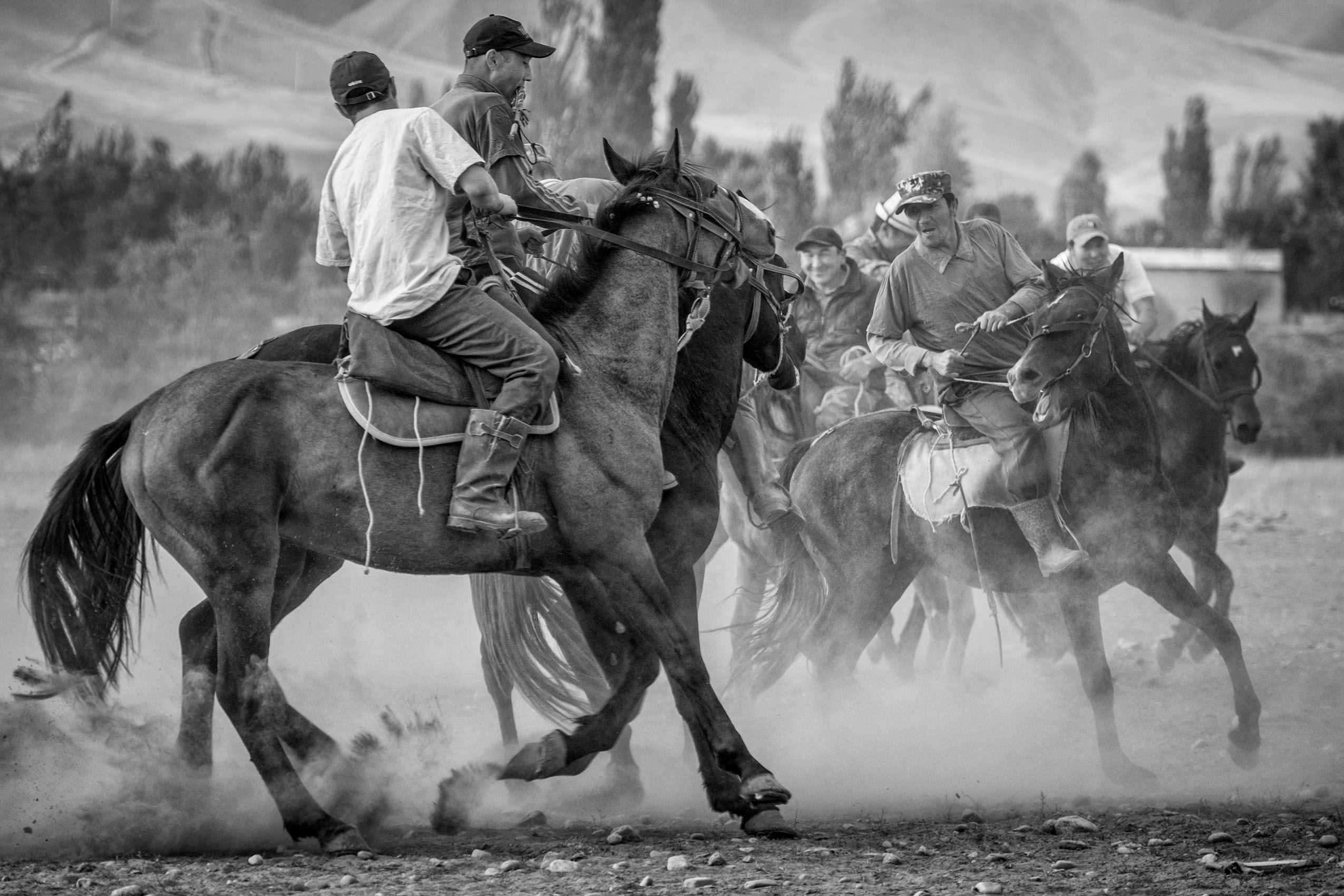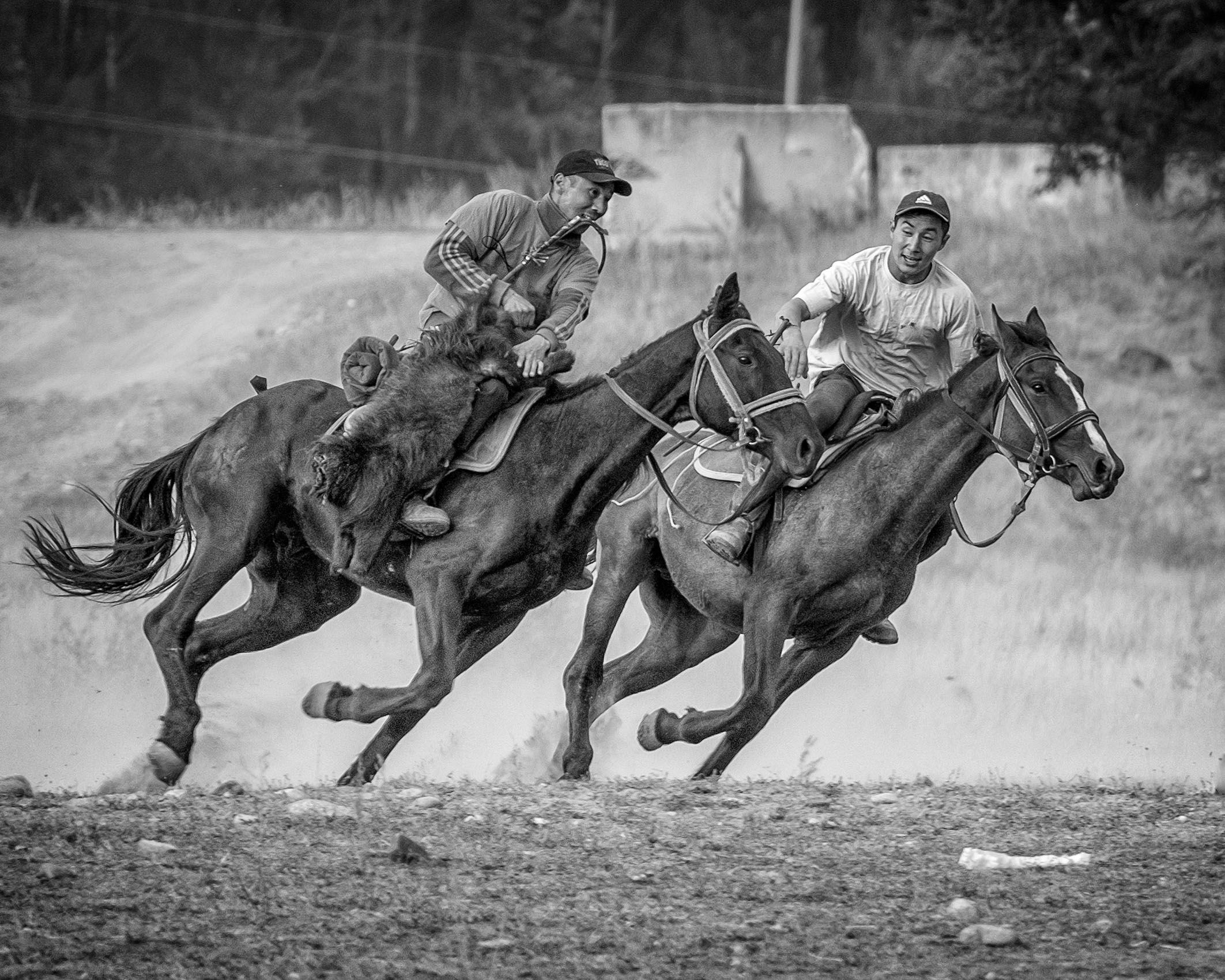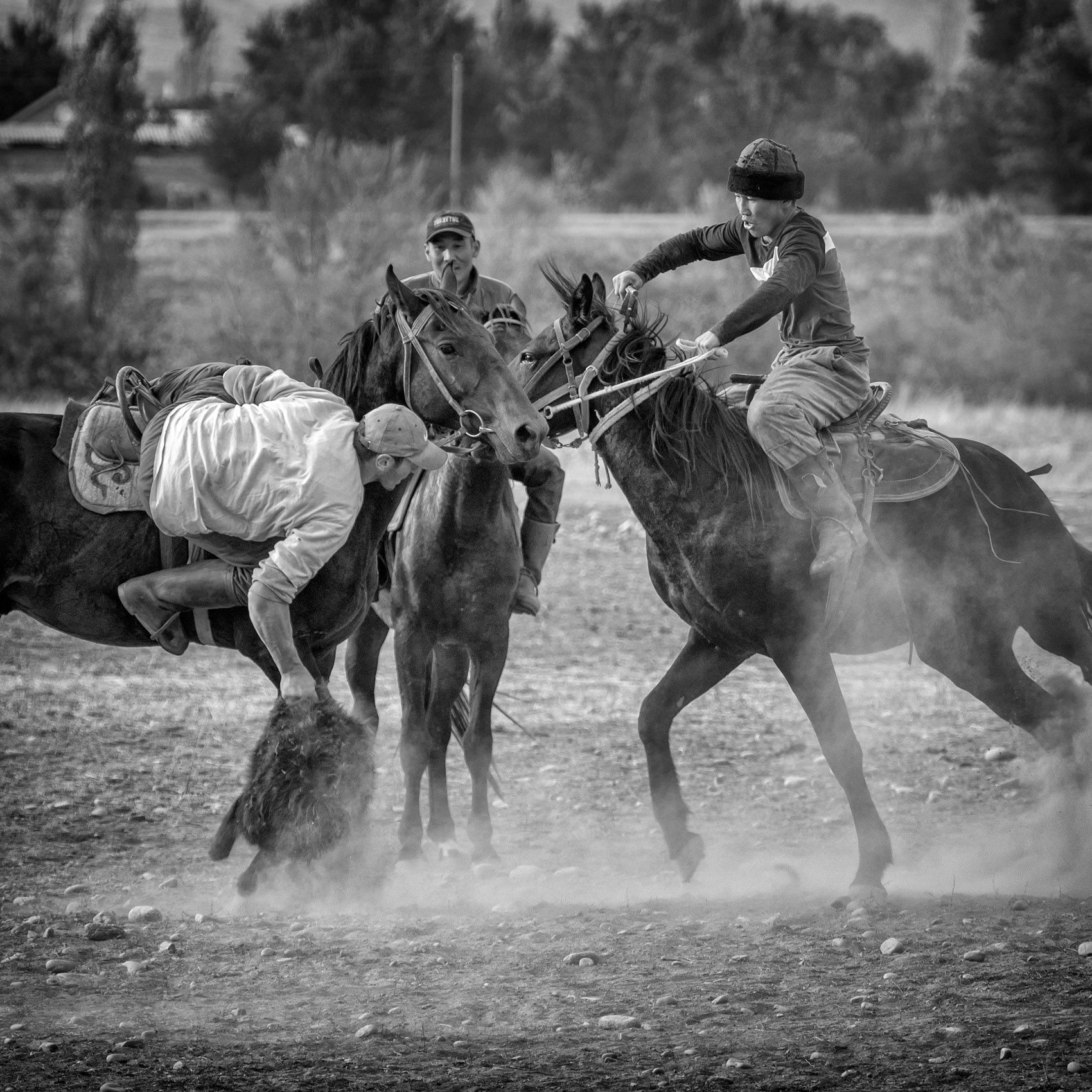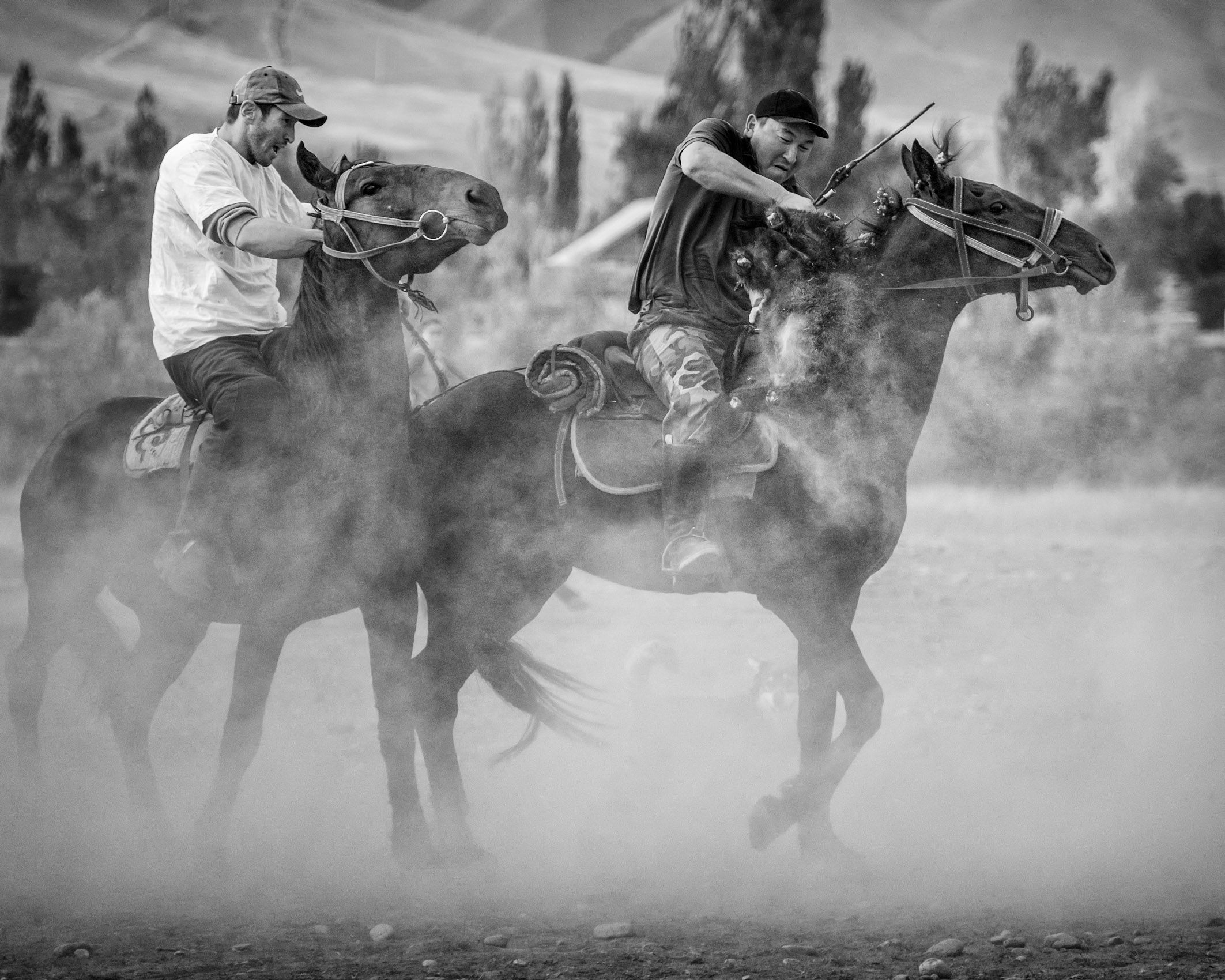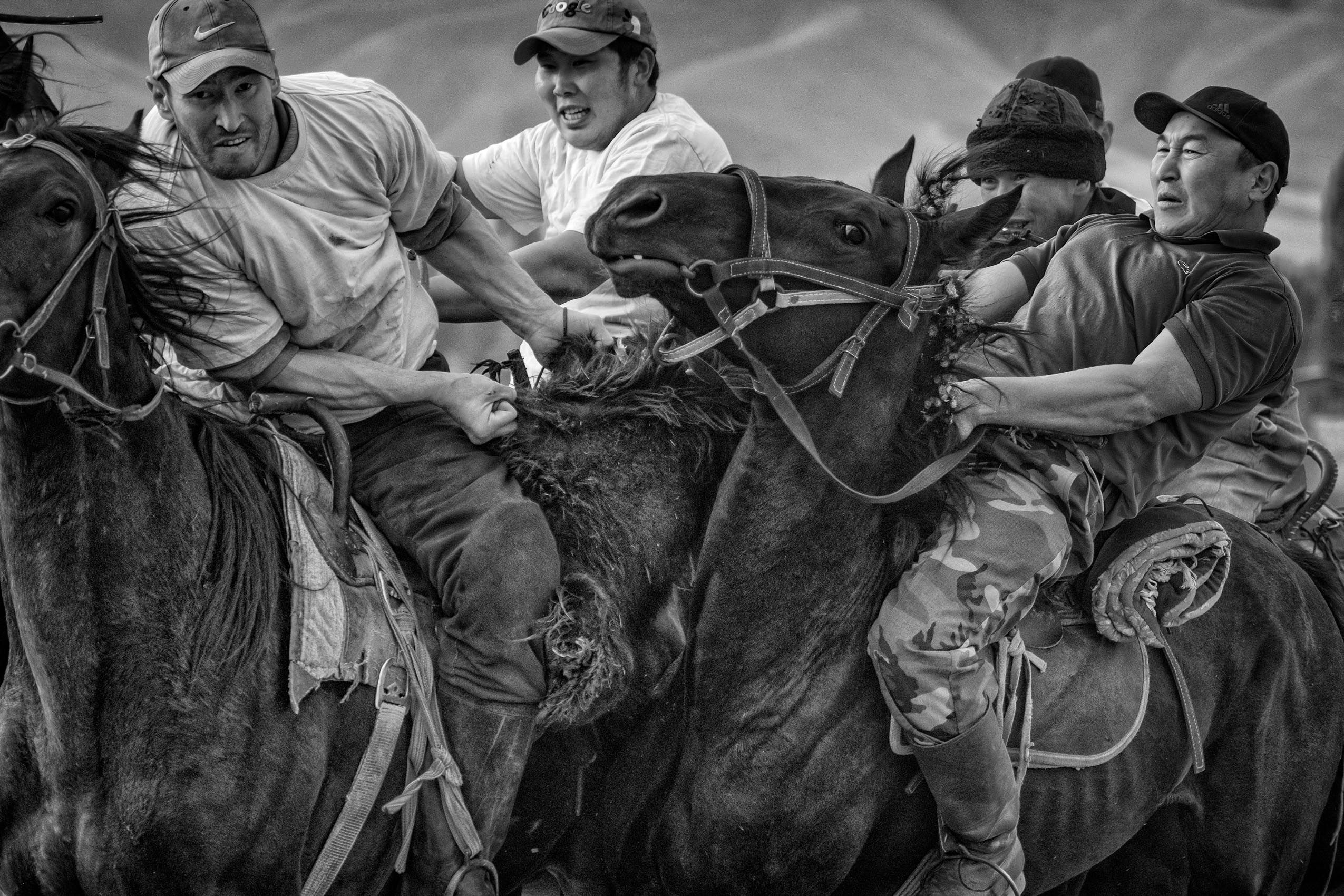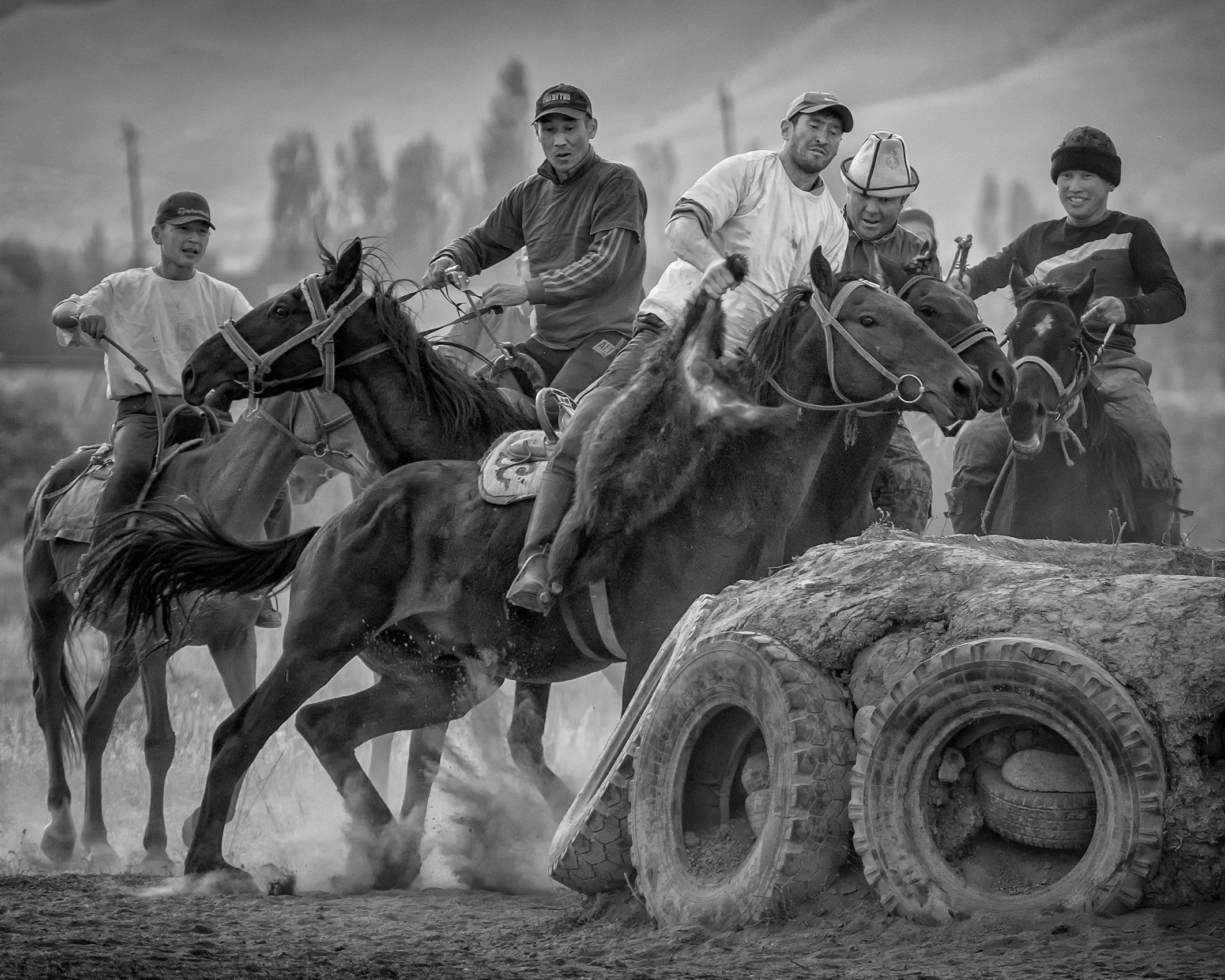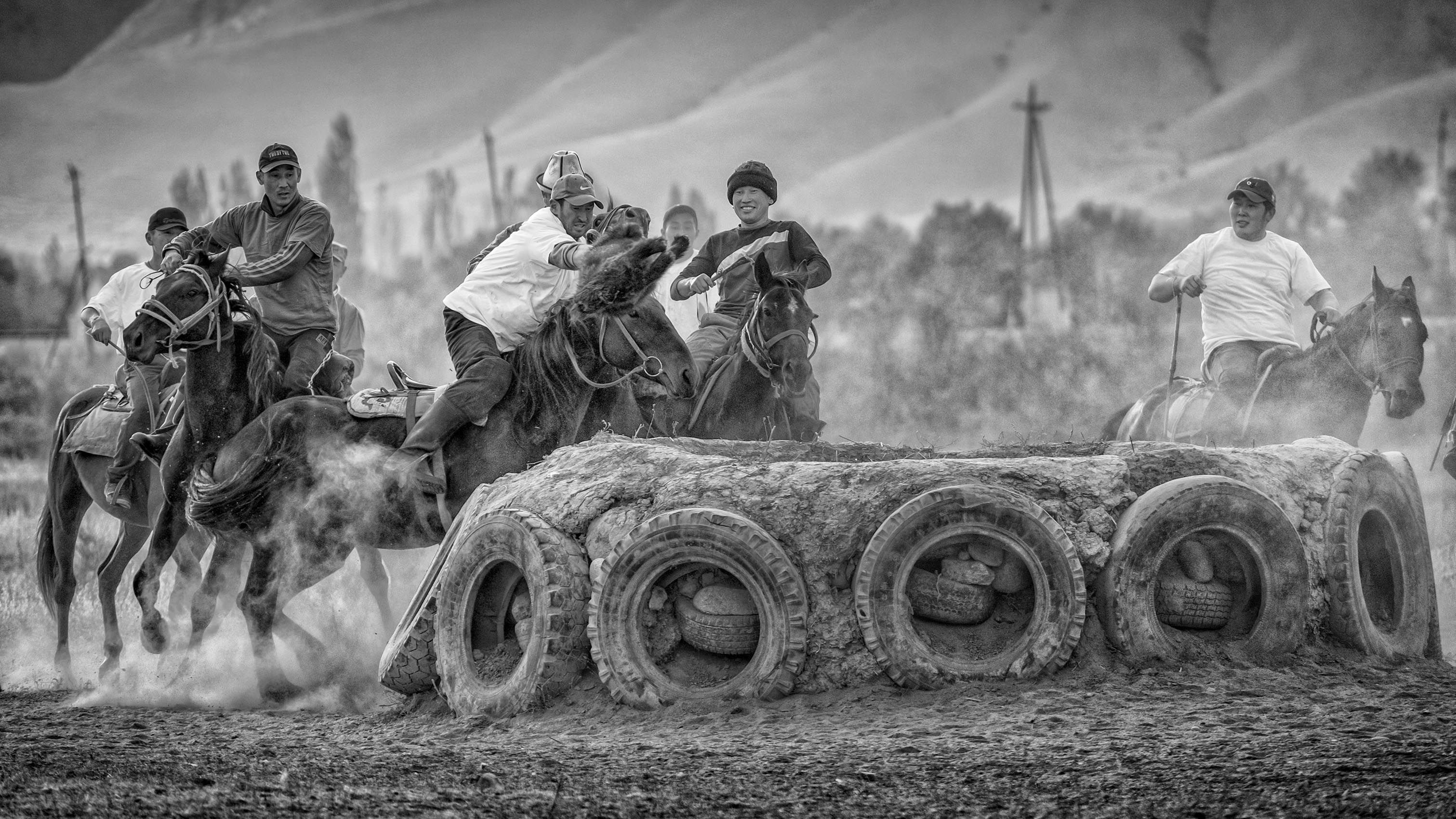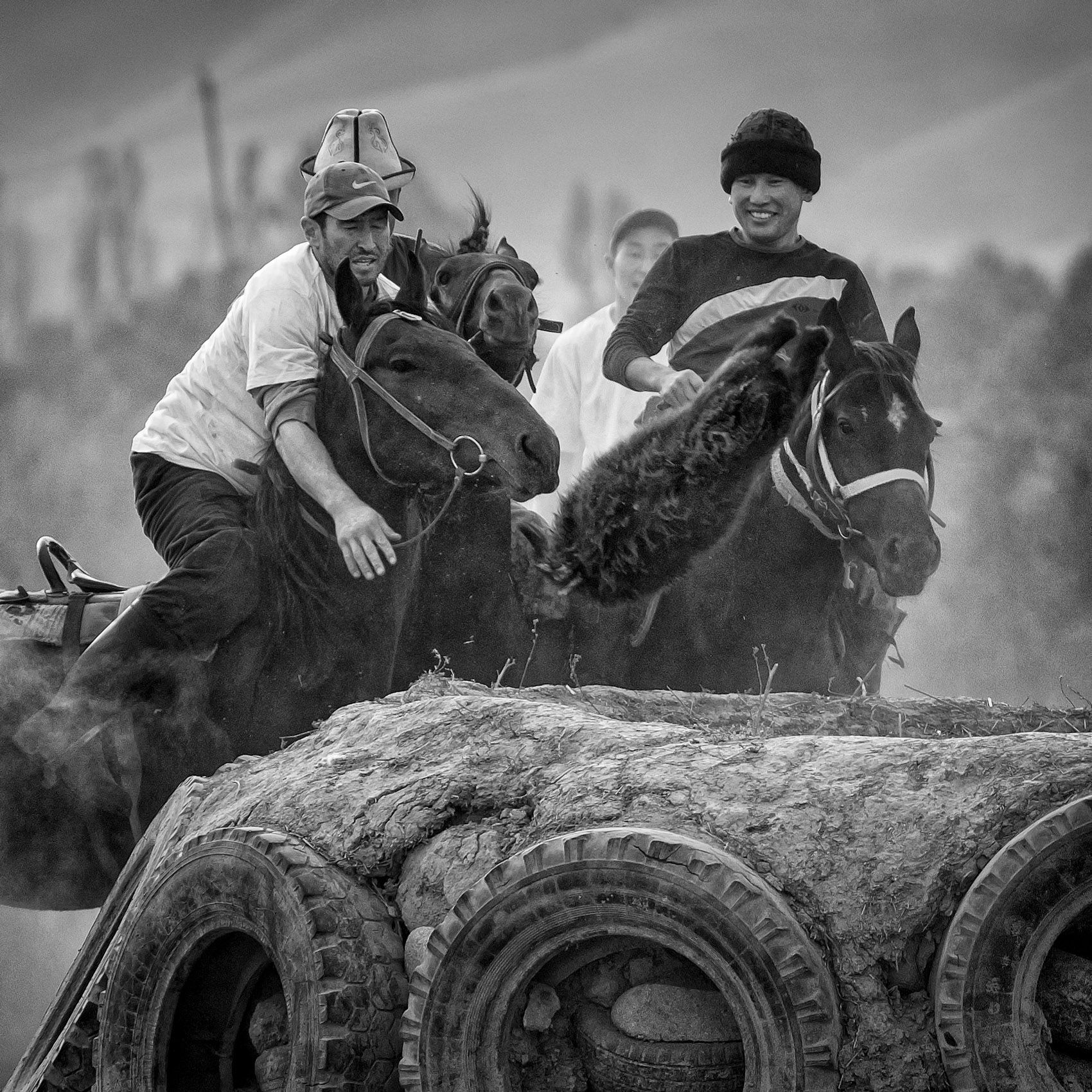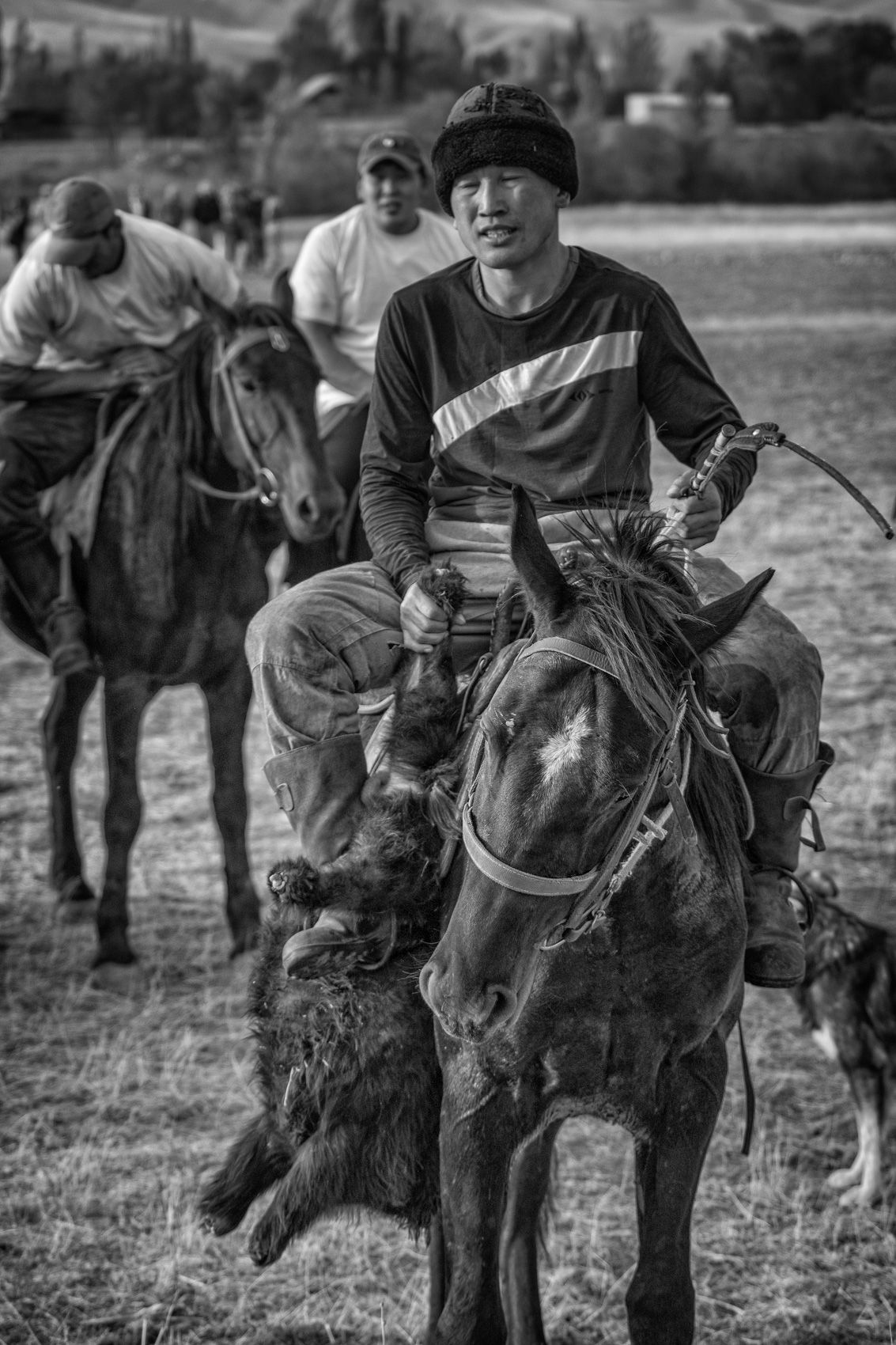KYRGYZSTAN: Horseplay
The grasslands of Central Asia have for centuries been the home of nomadic herders with superb equestrian skills. China’s urgent desire to acquire the horses of this region for defense against Mongol invaders was the original impetus for development of the Silk Road. Common to the cultures of various Central Asian ethnic groups have long been equestrian games of various sorts, the most celebrated and significant of which is buzkashi (apparently meaning “goat pulling” in Farsi). Buzkashi is considered the national game of Afghanistan but it is widely played throughout Central Asia as well as among the ethnic Tajiks of western China. A kind of rough and ready nomadic polo, buzkashi substitutes for a ball or puck the carcass of a goat or sheep that has been decapitated and had its feet cut off. A player or team scores a goal when the hand held carcass is deposited into a designated pit or basket. This is serious and strategic horseplay—very demanding on both the players and their mounts, and potentially dangerous even for spectators—as I found when I narrowly avoided being trampled while watching and shooting the action captured here. This was on a field outside the village of Kalmak Ashu in Kyrgyzstan. Here buzkashi was played by opposing teams, and was preceded by other contests on horseback that are common to the region, including reaching down to pick up a flag while at a gallop and a kind of equestrian wrestling with the object of unseating one’s opponent.

